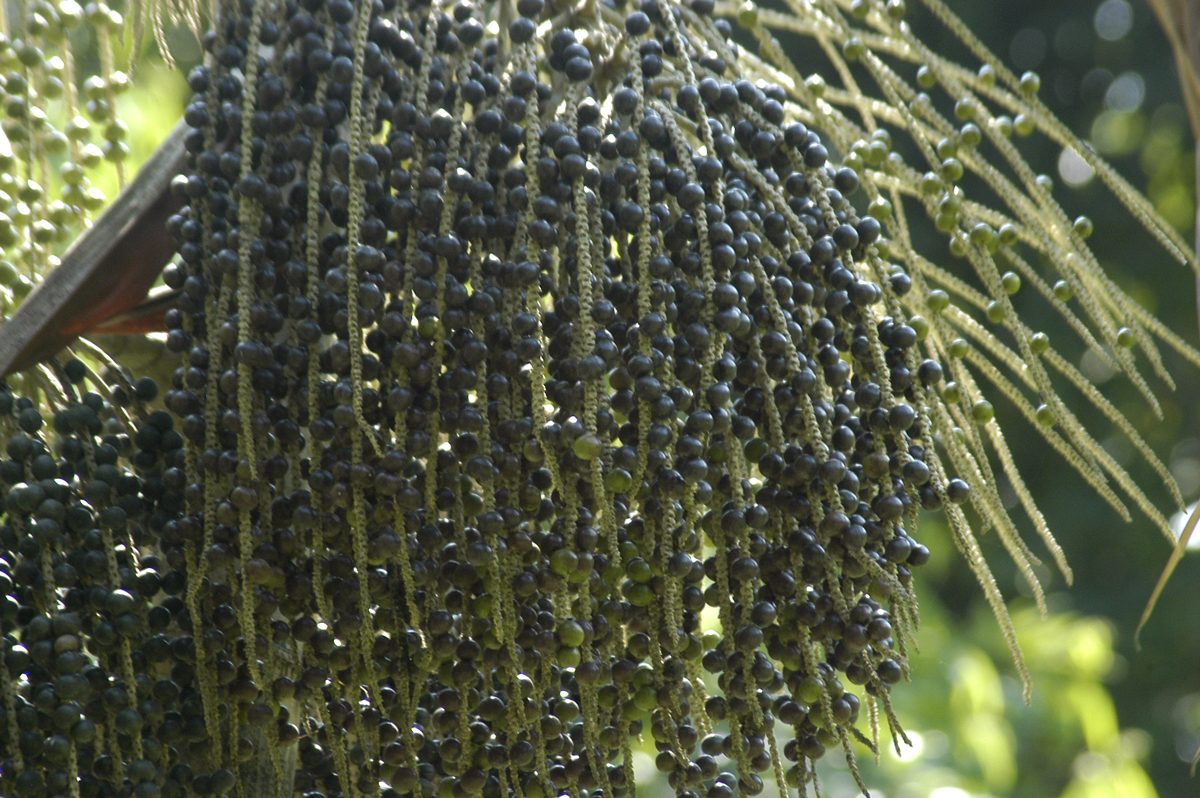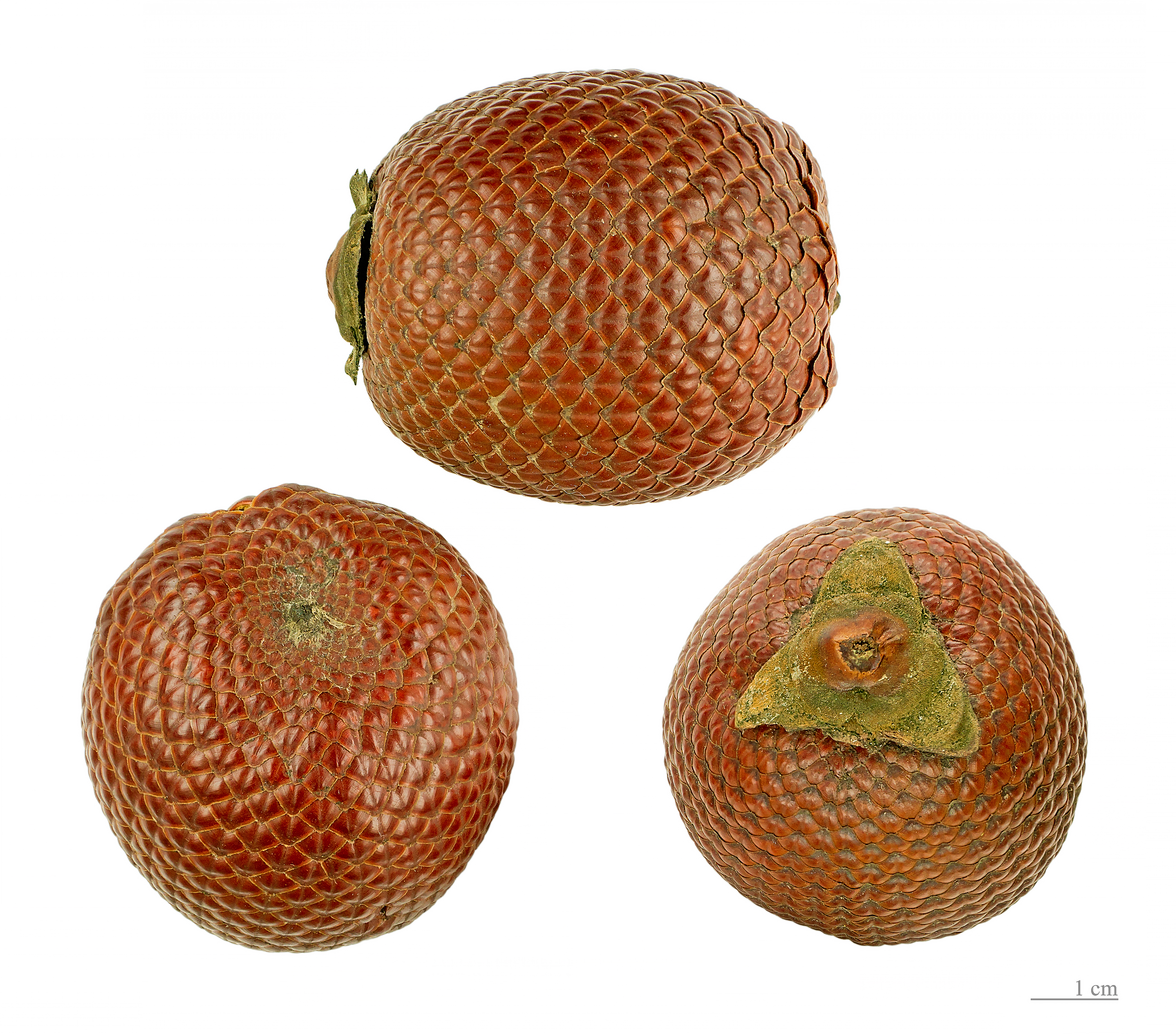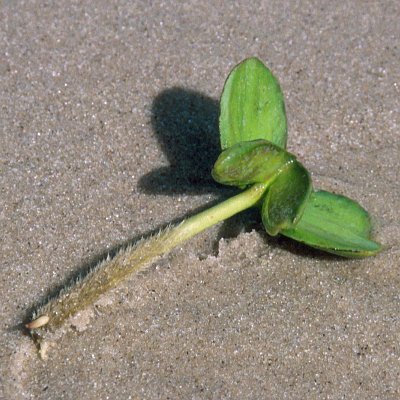|
Guianan Mangroves
The Guianan mangroves (NT1411) is a coastal ecoregion of southeastern Venezuela, Guyana, Suriname, French Guiana and Brazil. The mangroves provide an important habitat for migrating birds that winter in the area. Large areas are intact, although they are threatened by destruction of the trees for timber and to make way for agriculture, and from upstream agricultural and industrial pollution. Location The Guianan mangroves ecoregion extends along the Atlantic coasts of northeastern Venezuela, Guyana, Suriname, French Guiana, and Cabo Orange in Brazil. It covers an area of about between the deltas of the Orinoco and Oyapock rivers. It includes the Gulf of Paria and the delta of the San Juan River. The largest part is in Venezuela in and around the Orinoco delta. The mangroves lie between the sea and areas of Orinoco Delta swamp forests, Guianan moist forests and Guianan freshwater swamp forests. The Guianan mangroves ecoregion is part of the Guianan-Amazon Mangroves global ecor ... [...More Info...] [...Related Items...] OR: [Wikipedia] [Google] [Baidu] |
Turuépano National Park
The Turuépano National Park ( es, Parque nacional Turuépano) Is a protected area with national park status in the South American country of Venezuela, located in the Benítez, Cajigal, Libertador and Mariño municipalities in the eastern part of Sucre State, north of the San Juan River and in front of the Gulf of Paria. The park protects part of the Orinoco Delta swamp forests ecoregion. The park is composed of deltaic plains with marine influence, unique in the country, characterized by mangrove swamps, canals and channels, being the main inhabitant of these places the manatee. It has an estimated area of 72,600 hectares. The temperature remains constant throughout the year with an annual variation of 2 °C and the averages oscillate between 26.9 °C and 27.8 °C. The Caño Viejo and Blanca Lagoon are recognized corners of the National Park where many birds live and pass. It was created by Decree N ° 1.634 dated 05/06/1991; Published in Official Gazette 34.987 da ... [...More Info...] [...Related Items...] OR: [Wikipedia] [Google] [Baidu] |
Açaí Palm
The açaí palm (, , from Nheengatu ''asai''), ''Euterpe oleracea,'' is a species of palm tree (Arecaceae) cultivated for its fruit (açaí berries, or simply açaí), hearts of palm (a vegetable), leaves, and trunk wood. Global demand for the fruit has expanded rapidly in the 21st century, and the tree is cultivated for that purpose primarily. The species is native to eastern Amazonia, especially in Brazil, mainly in swamps and floodplains. Açaí palms are tall, slender trees growing to more than tall, with pinnate leaves up to long. The fruit is small, round, and black-purple in color. The fruit became a staple food in floodplain areas around the 18th century, but its consumption in urban areas and promotion as a health food only began in the mid 1990s along with the popularization of other Amazonian fruits outside the region. Name The common name comes from the Portuguese adaptation of the Tupian word ', meaning "ruit thatcries or expels water". The importance of the fru ... [...More Info...] [...Related Items...] OR: [Wikipedia] [Google] [Baidu] |
Symphonia Globulifera
''Symphonia globulifera'', commonly known as boarwood, is a timber tree abundant in Central America, the Caribbean, South America and Africa. This plant is also used as a medicinal plant and ornamental plant. Common names Common trade names of the wood of the ''Symphonia globulifera'' are: chewstick, chestick, manni, manil, azufre, and Árbol de Leche Maria. Distribution ''Symphonia globulifera'' is abundant in the Americas (from Mexico and the Caribbean south to Ecuador) and Africa (from Liberia east to Uganda and south to Angola). Population genetics ''S. globulifera'' is highly structured across Mesoamerica and the Caribbean, while the eastern foothills of the Andes show little diversity. See also * List of plants of Amazon Rainforest vegetation of Brazil This is a list of plants found in the wild in Amazon Rainforest vegetation of Brazil. The estimates from useful plants suggested that there are 800 plant species of economic or social value in this forest, according to Gi ... [...More Info...] [...Related Items...] OR: [Wikipedia] [Google] [Baidu] |
Pterocarpus Officinalis
''Pterocarpus officinalis'', the dragonsblood tree, is a species of flowering plant in the family Fabaceae, native to southern Mexico, Central America, the Caribbean, and northern South America. It is typically found in coastal freshwater or slightly brackish habitats, in association with mangroves that occupy the more saline areas. Its timber is commercially traded. References officinalis ''Officinalis'', or ''officinale'', is a Medieval Latin epithet denoting organisms—mainly plants—with uses in medicine, herbalism and cookery. It commonly occurs as a specific epithet, the second term of a two-part botanical name. ''Officinali ... Flora of Southwestern Mexico Flora of Veracruz Flora of Southeastern Mexico Flora of Central America Flora of the Caribbean Flora of northern South America Flora of Ecuador Flora of Colombia Flora of North Brazil Flora of Northeast Brazil Plants described in 1763 Flora without expected TNC conservation status {{Dalbergieae-s ... [...More Info...] [...Related Items...] OR: [Wikipedia] [Google] [Baidu] |
Mauritia Flexuosa
''Mauritia flexuosa'', known as the moriche palm, ''ité'' palm, ''ita'', ''buriti'', ''muriti'', ''miriti'' (Brazil), ''canangucho'' (Colombia), ''acho'' (Ecuador), or ''aguaje'' (Peru), is a Arecaceae, palm tree. It grows in and near swamps and other wet areas in tropical South America. ''Mauritia flexuosa'', a tree, can reach up to in height. The large leaves form a rounded crown. The flowers are yellowish and appear from December to April. The fruit, which grows from December to June, is a chestnut color and is covered with shiny scales. The yellow flesh covers a hard, oval nut. The seeds float, and this is the means by which the palm tree propagates. In natural populations, the tree reaches very high densities. Fruit Moriche palm fruit ("morete" in the Oriente (Ecuador), Oriente of Ecuador) is edible and used to make juice, jam, ice cream, a fermented "wine", desserts and snacks, requiring harvesting of more than 50 tonnes per day in Peru. The inflorescence buds are eaten ... [...More Info...] [...Related Items...] OR: [Wikipedia] [Google] [Baidu] |
Rhizophora Racemosa
''Rhizophora racemosa'' is a species of mangrove tree in the family Rhizophoraceae. It has a patchy distribution on the Pacific coast of Central and South America, occurs in places on the Atlantic coast of that continent, and has a more widespread range on the Atlantic coast of West Africa. Description Members of the genus ''Rhizophora'' are very similar to each other in morphology. They grow up to tall often with aerial stilt roots, but in more marginal habitats are shorter, more branched and scrubby. The leaves grow in opposite pairs, each pair with two interlocking stipules. The leaves are simple and entire, with elliptical hairless blades and slightly down-rolled margins. The lower surfaces have numerous tiny corky warts which appear as black spots on dried leaves. At one time considered to be a subspecies of ''Rhizophora mangle'', ''R. racemosa'' is now accepted as a full species, most easily distinguished by the fact that the stem of the axillary flowers branches up to si ... [...More Info...] [...Related Items...] OR: [Wikipedia] [Google] [Baidu] |
Rhizophora Harrisonii
''Rhizophora harrisonni'' is a species of plant in the family Rhizophoraceae. It can be found in Brazil, Cameroon, Colombia, Costa Rica, Ecuador, Guyana, French Guiana, Honduras, Nicaragua, Panama, Suriname, Trinidad, Tobago, and Venezuela. Description It is a tree that reaches a size of up to 20 m high. It has elliptical leaves, 11–15 cm long and 4–7 cm wide, the acute apex, the cuneate base, glabrous, undersides with black dots. The inflorescence of 5–12 cm long, 3-5 times branched, with many flowers, peduncle 2–7 cm long, with bracts thick, bifid; pedicels 3–11 mm long, flowers 1 cm long; stamens 8; oval or slightly elliptical floral bud, acute apex. Oval-lanceolate fruit, 4 cm long and 1.5 cm wide, radicle 11–25 cm long. Habitat Being a component of the mangrove communities, gentleman mangroves are usually associated with other mangrove species such as ''Avicennia tonduzzi'' Moldenke, ''Avicennia bicolor'' Stand., ... [...More Info...] [...Related Items...] OR: [Wikipedia] [Google] [Baidu] |
Rhizophora Mangle
''Rhizophora mangle'', the red mangrove, is distributed in Estuary, estuarine ecosystems throughout the tropics. Its Vivipary, viviparous "seeds", in actuality called propagules, become fully mature plants before dropping off the parent tree. These are dispersed by water until eventually embedding in the shallows. ''Rhizophora mangle'' grows on Aerial root#Aerial roots as supports, aerial prop roots, which arch above the water level, giving stands of this tree the characteristic "mangrove" appearance. It is a valuable plant in Florida, Louisiana, and Texas coastal ecosystems. In its native habitat it is threatened by invasive species such as the Brazilian pepper tree ''(Schinus terebinthifolius)''. The red mangrove itself is considered an invasive species in some locations, such as Hawaii, where it forms dense, monoculture, monospecific thickets. ''R. mangle'' thickets, however, provide nesting and hunting habitat for a diverse array of organisms, including fish, birds, and cro ... [...More Info...] [...Related Items...] OR: [Wikipedia] [Google] [Baidu] |
Laguncularia
''Laguncularia'' is a genus of plants in the family Combretaceae The Combretaceae, often called the white mangrove family, are a family of flowering plants in the order Myrtales. The family includes about 530 species of trees, shrubs, and lianas in ca 10 genera. The family includes the leadwood tree, ''Combre .... The only species in the genus is '' L. racemosa'' Gaertn. f. References External links Laguncularia (Combretaceae)- retrieved June 16, 2008 * lan li shu. (2007) "LUMNITZERA". ''Flora of China'' 13: 309–310. 2007. Found a- retrieved June 16, 2008 Combretaceae Myrtales genera {{Myrtales-stub ... [...More Info...] [...Related Items...] OR: [Wikipedia] [Google] [Baidu] |
Avicennia
''Avicennia'' is a genus of flowering plants currently placed in the bear's breeches family, Acanthaceae. It contains mangrove trees, which occur in the intertidal zones of estuarine areas and are characterized by its "pencil roots", which are aerial roots. They are also commonly known as ''api api'', which in the Malay language means "fires", a reference to the fact that fireflies often congregate on these trees. Species of ''Avicennia'' occur worldwide south of the Tropic of Cancer. The taxonomic placement of ''Avicennia'' is contentious. In some classifications, it has been placed in the family Verbenaceae, but more recently has been placed by some botanists in the monogeneric family Avicenniaceae. Recent phylogenetic studies have suggested that ''Avicennia'' is derived from within Acanthaceae, and the genus is included in that family in the Angiosperm Phylogeny Group system. Designation of species is made difficult by the great variations in form of ''Avicennia marina''. B ... [...More Info...] [...Related Items...] OR: [Wikipedia] [Google] [Baidu] |
Rhizophora
''Rhizophora'' is a genus of tropical mangrove trees, sometimes collectively called true mangroves. The most notable species is the red mangrove (''Rhizophora mangle'') but some other species and a few natural hybrids are known. ''Rhizophora'' species generally live in intertidal zones which are inundated daily by the ocean. They exhibit a number of adaptations to this environment, including pneutomatophores that elevate the plants above the water and allow them to respire oxygen even while their lower roots are submerged and a cytological molecular "pump" mechanism that allows them to remove excess salts from their cells. The generic name is derived from the Greek words ριζα (''rhiza''), meaning "root," and φορος (''phoros''), meaning "bearing," referring to the stilt-roots. The beetle '' Poecilips fallax'' is a common pest of these trees, especially '' Rhizophora mucronata'' and ''Rhizophora apiculata''. This beetle (related to carver beetles) lays its eggs in the ... [...More Info...] [...Related Items...] OR: [Wikipedia] [Google] [Baidu] |







